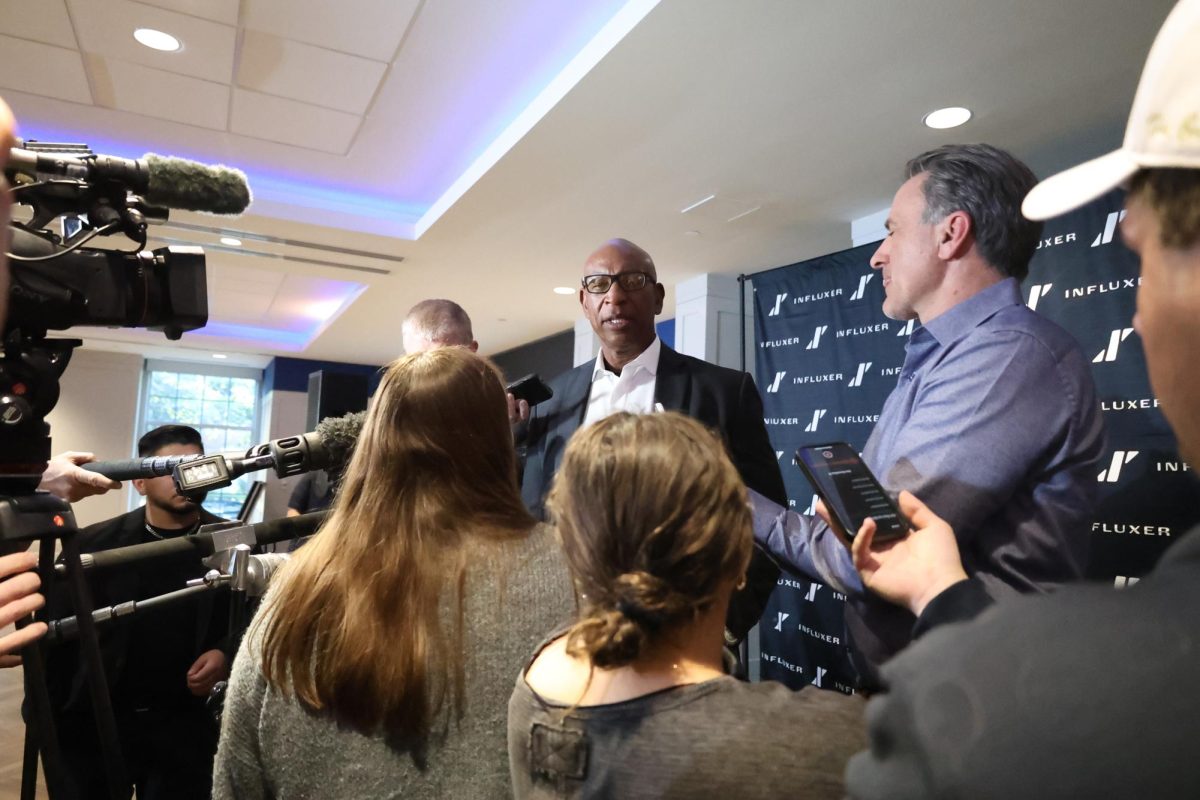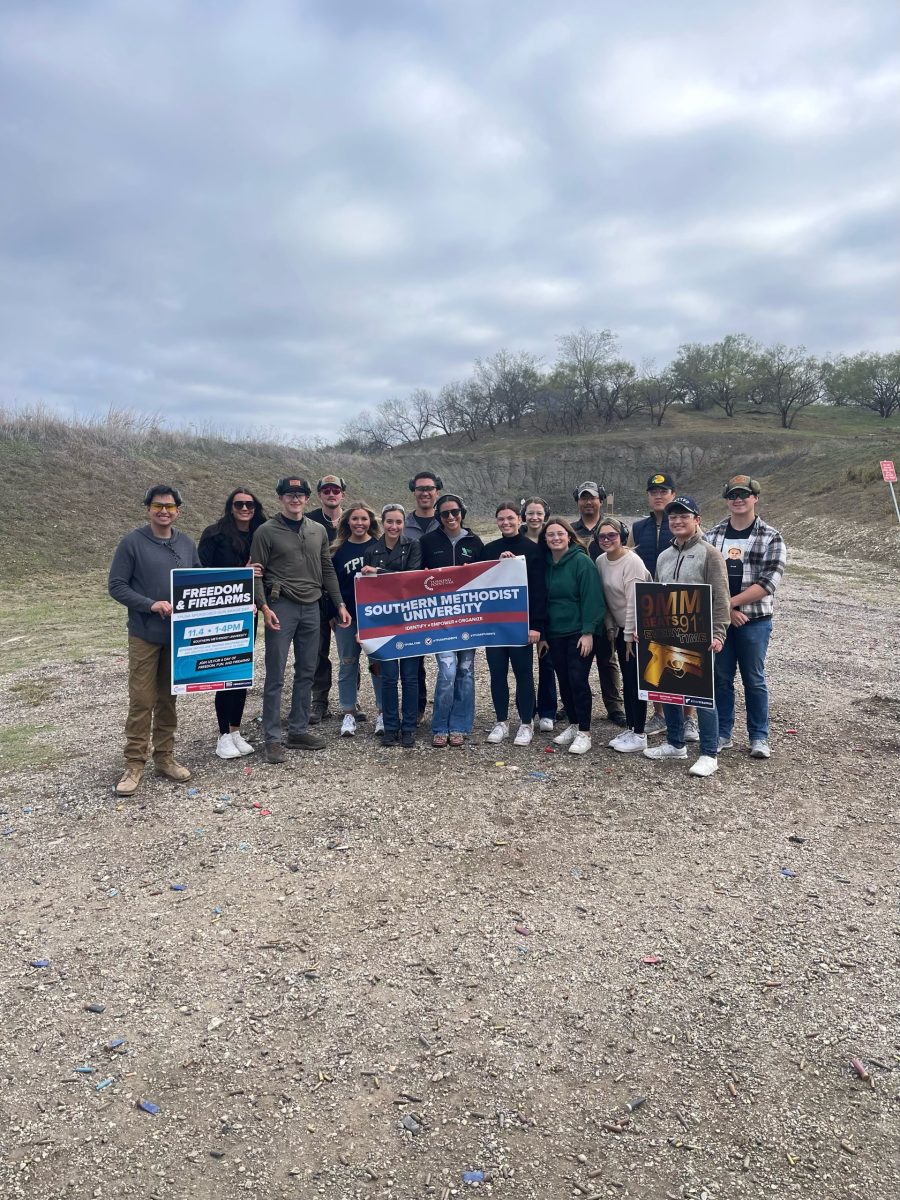
Pulitzers enthrall all
On Sept. 11, 2001, Steve Ludlum, photographer for The New York Times, gazed at the skyline of New York City through the eye of his camera, photographing the World Trade Center ablaze from the strike of American Airlines flight 11 and United Airlines flight 175. While most New Yorkers ran for shelter or waited for loved ones at home, Ludlum spent an hour and a half at the photo service of a drugstore, believing “an artist has one shot at greatness and this was [his].”
Ludlum’s shot at greatness succeeded. He won the 2001 Pulitzer Prize for his representation of the worst attack on American soil.
The picture is the latest member of a national tour of 120 Pulitzer photographs, both color and black and white, developed by the Newseum, the interactive museum of news in Arlington, Va.
The tour is the premier exhibition for the temporary seventh floor expansion of Dallas’s Sixth Floor Museum at Dealey Plaza, a historical museum that receives around 500,000 visitors annually. It is devoted to cataloging the life, times, and death of President John F. Kennedy. The building is a national historic landmark also infamous for being Lee Harvey Oswald’s location when he assassinated President Kennedy.
The tour, titled The Pulitzer Prize Photographs: Capture the Moment, is the largest and most comprehensive exhibition of Pulitzer Prize-winning photographs ever shown in the United States. Six of these are the work of Texas photographers. Cost is $9 with a student ID. The photographs range in date starting from 1941, the year of the first photography award, to the present.
The entire collection represents a diverse range of subject matter presenting moments of the history and heroism of our nation: influential pieces of national crises, glimpses into other cultures and acts of merciless inhumanity.
One 1962 photo shows President John F. Kennedy walking with President Eisenhower at Camp David after the failure of the Bay of Pigs Invasion. Another, taken in 1990, depicts the fall of the Berlin Wall.
The 1952 award went to a photo demonstrating an act of racial cruelty. The Oklahoma Aggies, a then all-white football team, played the Drake University Bulldogs, an integrated northern team. During the game, black Johnny Bright, a top collegiate yard gainer, was repeatedly punched by the Aggies defensive end, Willbanks Smith, ultimately breaking his jaw.
The winning photo of 1995 captures the brutality of Rwanda. Other photos reveal the starvation in Africa and soldiers in Vietnam.
More uplifting photos include the retirement of Babe Ruth (1949), soldiers returning home from World War II (1944), and the elation of the Nigerian women’s 100-meter relay team winning the Olympic bronze medal in 1993.
The exhibit also includes a myriad of instantly recognizable images. Among them are the 1945 planting of the American flag on Mount Surbachi on Iwo Jima and the 1964 photo of Jack Ruby shooting Lee Harvey Oswald. More recent events include the Oklahoma City bombing, the Clinton impeachment, the attack at Columbine High School and the seizure of Elian Gonzalez.
Each photo is accompanied with a story explaining it from the photographer’s point of view.
It takes about one to two hours to go through the entire exhibit.
One tourist from Sydney, Australia, described the exhibition as “draining, emotionally draining.” Employees believe the museum to be rather emotional.
“We like to think of the exhibit as an experience,” said Jack Bunning, the director of marketing and development.
The addition of the seventh floor to the Sixth Floor Museum was a $2.5 million renovation project transforming the floor from a storage space to an exhibition ground over the course of four months. The expansion doubled the museum’s capacity and provided the opportunity for new exhibits.
“It seems fitting to introduce the seventh floor with a powerful exhibition like Capture the Moment,” said Jeff West, the museum’s executive director. “It’s the news of our era, moments of great pride and scenes of deep despair. The recollection of these moments is made richer at this historic site.”
The museum is open seven days a week from 9 a.m. to 6 p.m. and the exhibit runs until December.








